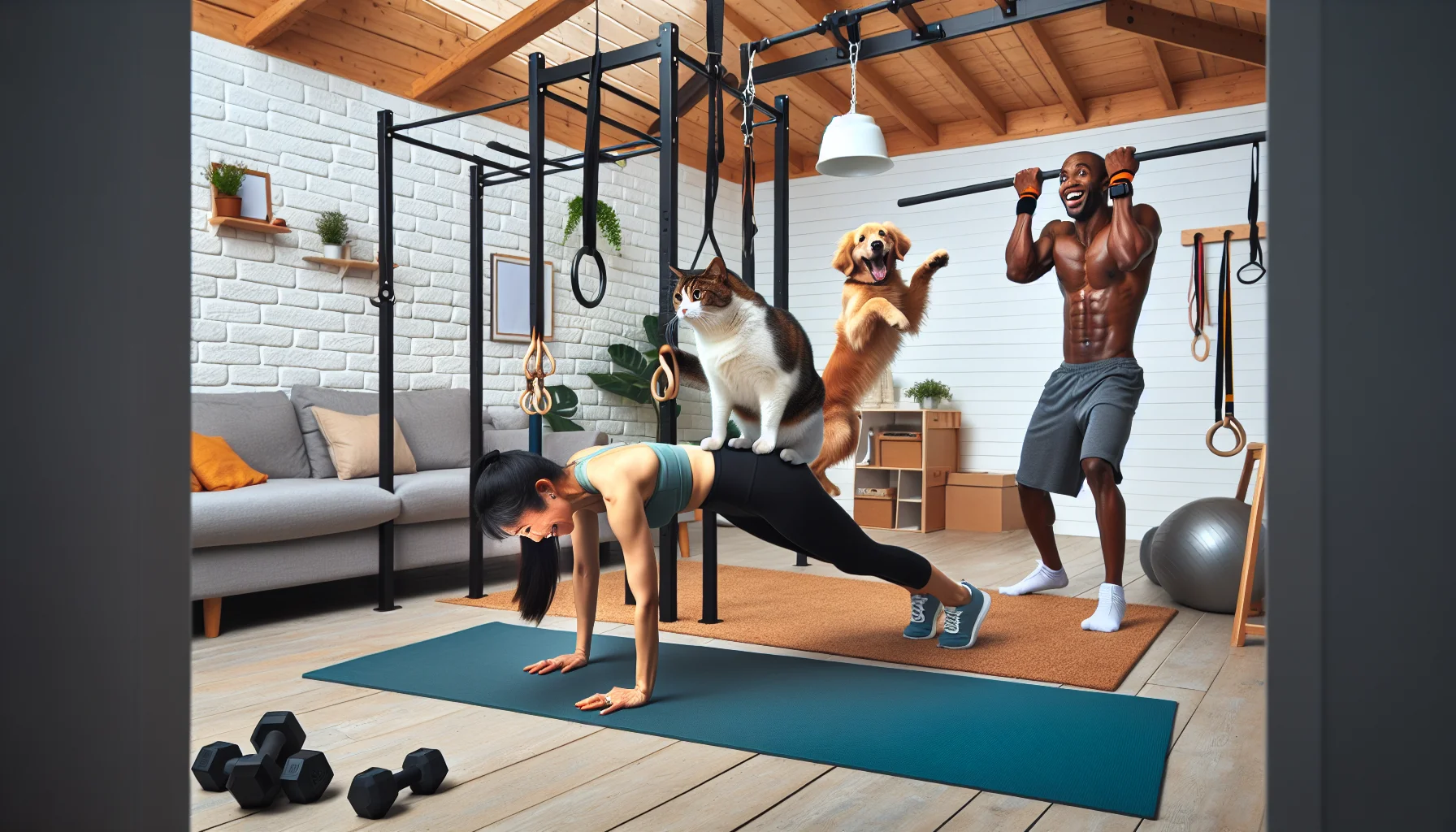Calisthenics equipment for home Quiz
Test Your Knowledge
Question of
The Ultimate Guide to Calisthenics Equipment for Home
Embracing calisthenics at home can significantly transform your fitness journey, offering a convenient and effective way to enhance strength, flexibility, and endurance. Investing in the right calisthenics equipment enables you to diversify your workouts, ensuring that you can target different muscle groups effectively and keep your routines engaging. From improving your physical health to saving time and money on gym memberships, the benefits of having your own calisthenics setup at home are vast and varied. This guide aims to explore the essential equipment you need to create a versatile and challenging home gym environment that caters to all your fitness goals.
Top Calisthenics Equipment for Your Home Gym
- Pull-up Bars: Essential for upper body strength workouts, allowing you to perform pull-ups, chin-ups, and hanging leg raises to target your back, shoulders, and core.
- Parallettes: Low parallel bars perfect for dips, L-sits, handstands, and push-up variations, helping to build strength and stability in your wrists, arms, and core.
- Resistance Bands: Versatile tools for adding resistance to your workouts or assisting in exercises like pull-ups. They are excellent for targeting specific muscle groups and improving flexibility.
- Weight Vests: Add extra weight to your body to increase the intensity of your workouts, beneficial for building muscle and strength more effectively during bodyweight exercises.
How to Choose the Right Calisthenics Equipment
When selecting calisthenics equipment for home workouts, several critical factors must be considered to ensure you make the right choice for your fitness journey. First, assess the space you have available. Calisthenics equipment ranges from compact, handheld tools to larger setups requiring significant floor space. Therefore, understanding your available space is crucial to avoid overcrowding your workout area. Next, consider your budget. There's equipment available at various price points, so identifying how much you're willing to invest can help narrow down your options. Your fitness level also plays a significant role in your selection. Beginners might benefit from simpler, more versatile equipment, while more advanced users may seek specialized gear to target specific muscle groups or skills. Lastly, your fitness goals should guide your equipment choice. Whether you aim to improve strength, flexibility, or endurance, ensure the equipment you choose aligns with these objectives for an effective home workout experience.
Setting Up Your Home Calisthenics Gym
When creating a calisthenics gym at home, it's essential to organize your workout space efficiently to ensure safety and make the most out of the available area. Start by designating a specific area for your gym, ideally a space with enough room for you to move freely in all directions. Safety should be your top priority, so ensure the floor is even and consider adding non-slip mats to prevent accidents. Utilize vertical space by installing wall-mounted bars or hooks for equipment like resistance bands or gymnastic rings, which can easily be removed to free up space. Keep smaller equipment like jump ropes and hand grips in storage bins or shelves to maintain a clutter-free environment. Remember, the key is to create a versatile space that can adapt to various workouts while keeping safety in the forefront of your planning.
Incorporating Calisthenics Equipment into Your Workout Routine
-
Pull-Up Bar:
- Pull-ups: Targets the upper back, shoulders, and biceps.
- Chin-ups: Focuses on biceps, forearms, and back.
- Leg Raises: Works the abdominal muscles and hip flexors.
-
Parallel Bars:
- Dips: Targets triceps, chest, and shoulders.
- Leg Raises: Focuses on the lower abdomen and hip flexors.
- Bodyweight Rows: Works the back, biceps, and grip.
-
Resistance Bands:
- Band Pull Aparts: Targets the rear deltoids and upper back.
- Banded Push-ups: Increases resistance for chest, shoulders, and triceps.
- Banded Squats: Focuses on quadriceps, hamstrings, and glutes.
-
Jump Rope:
- Basic Jumps: Improves cardiovascular fitness and tones the calves.
- High Knees: Targets the abs, increases heart rate.
- Double Unders: For advanced cardio and coordination, works the whole body.
-
Kettlebells:
- Kettlebell Swings: Works the posterior chain, including glutes, hamstrings, and lower back.
- Kettlebell Squats: Targets quads, hamstrings, glutes, and lower back.
- Turkish Get-Ups: A full-body workout focusing on mobility and stability.
Maintaining Your Calisthenics Equipment
Regular maintenance, cleaning, and proper storage of your calisthenics equipment are essential practices to ensure both the longevity of the equipment and your safety during workouts. Always start by inspecting your equipment for any signs of wear and tear, such as cracks, rust, or loose parts, before and after each use. Cleaning should be performed with mild soap and water, avoiding harsh chemicals that could damage the materials. For metal parts, consider using a rust protector. Ensure equipment is completely dry before storing it in a cool, dry place to prevent moisture buildup. Additionally, periodic tightening of bolts and nuts is recommended to maintain the structural integrity of your gear. By following these simple steps, you can keep your calisthenics equipment in top condition, ensuring a safe and effective workout environment.












